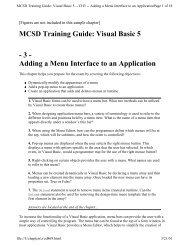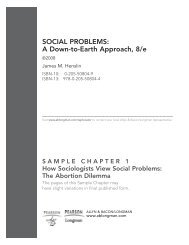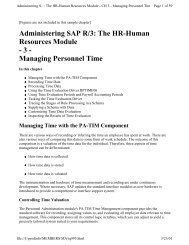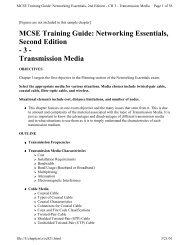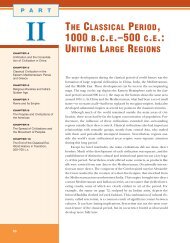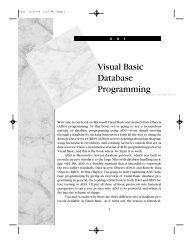3.0—Home Security and Surveillance Systems
3.0—Home Security and Surveillance Systems
3.0—Home Security and Surveillance Systems
You also want an ePaper? Increase the reach of your titles
YUMPU automatically turns print PDFs into web optimized ePapers that Google loves.
138<br />
Chapter<br />
................................................<br />
3<br />
Physical Devices<br />
The six major physical components of a home security <strong>and</strong> surveillance system<br />
are described in this section. Although some designs include additional<br />
components for enhanced performance or custom installations, the physical<br />
devices described here are considered the basic building blocks for a security<br />
<strong>and</strong> surveillance system that will provide adequate protection from intrusion.<br />
The essential physical assemblies include<br />
➤ Keypads<br />
➤ Sensors<br />
➤ <strong>Security</strong> panels<br />
➤ Cameras<br />
➤ Monitors<br />
➤ Switchers<br />
Keypads<br />
The keypad is the device used by the home residents to initiate comm<strong>and</strong>s<br />
for control options <strong>and</strong> observe the status of the security system. As shown<br />
in Figure 3.3, it usually contains an alphanumeric keypad <strong>and</strong> LED displays<br />
that indicate the status of the alarm system.<br />
Figure 3.3 Keypad.<br />
The keypad is used to arm <strong>and</strong> disarm the system <strong>and</strong> often includes a panic<br />
switch by which the alarm can be triggered instantly in an emergency situation.<br />
The alarm can be silenced by the owner by entering the correct coded<br />
sequence of numbers on the numerical keypad. The keypad is typically<br />
installed inside the home near a door that is most frequently used by the residents.<br />
A programmed delay is included as a feature of most systems to<br />
enable the users to enter <strong>and</strong> disarm the system within a fixed delay period<br />
(normally 30–45 seconds). The same fixed delay is also used to allow the user<br />
to arm the system <strong>and</strong> exit the home within the fixed delay period. Keypads<br />
can also be used to bypass certain areas.<br />
The bypass function is used to arm the system but disable selected zones or motion<br />
detectors inside the home when the family is present. Residents often desire to secure<br />
the perimeter area of doors <strong>and</strong> windows after retiring for the evening but need to<br />
bypass interior area motion detection sensors that are activated only when the home<br />
is not occupied.





